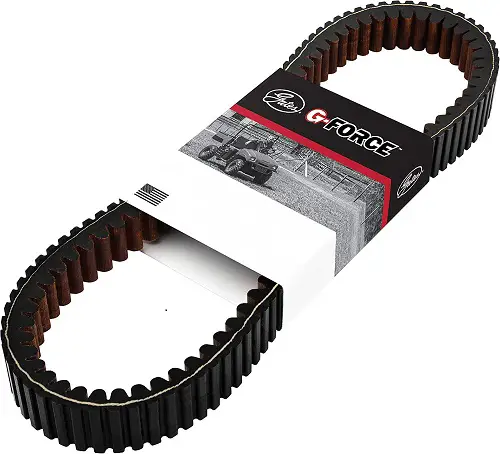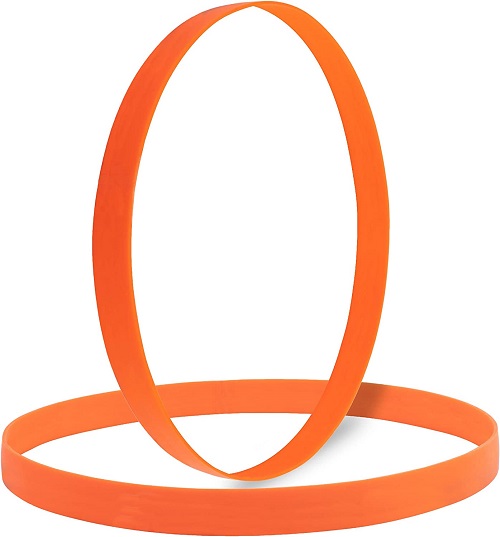
It’s essential to know how long can you drive on a broken tire belt in order to keep you as well as other drivers safe on the road. In this guide, we’ll go with how to handle it if your tire belt has broken. How long you may drive without risking injury, and what to do in such situation. Although it is never advised to drive with a flat tire, it does happen sometimes.
What is a Tire Belt?
A tire belt is like having a seatbelt for your car tires. By maintaining them in the right position where the problem is, you can prevent the tires from moving while you are driving. If your seatbelt didn’t keep you secure while you were driving, it may be awful. Tire belts help keep tires securely in place while you’re driving since the same thing happens to tires. It truly helps keep us safe on the road, much like a seatbelt.
Types of Tire Belts
Radial Ply Belts: The most popular form of tire belt and the one that offers the most stability during long-distance travel are radial ply belts. They are made of cords that cross one another directly across the tread. This provides extra durability and strength for when taking corners at high speeds or on rough terrain. Unfortunately, if you have a broken radial belt, it is not recommended to drive more than 50 miles before having it repaired or replaced as driving on a damaged tire belt can be dangerous.
Read More: What Happens if You Don’t Pay RNR Tire?
Bias Ply Belts: Bias ply belts feature cords that run diagonally across the tire tread in alternating directions. These types of belts trade off some stability for increased flexibility which can help with cornering performance but also makes them less durable over time compared to radial ply tires. If you have a broken bias ply belt, it’s recommended not to drive more than 25 miles before getting it repaired or replaced as they cannot handle as much stress as a radial ply tire would.
Steel Belts: Steel belts are made up of steel wires encased in rubber which give them superior durability compared to both bias and radial ply tires. They are frequently only utilized in commercial vehicles, such as semi-trucks, due to their tendency to be heavier and to provide less traction when turning.
Why is the Tire Belt Important?
Like laces for shoes are crucial for shoes, tire belts are an essential component of the car. The tire belt keeps all the components of the tire together, assisting in securing the tire to the wheel. A car requires a tire belts to keep its tires with, just as you need the shoelaces to protect your shoes from falling off! It is difficult to maintain control and the car would not be able to drive very well without it. Additionally, it’s essential to our security since it maintains the tires in good condition and keeps their cracking as we drive.
Causes of Broken Tire Belts
The most frequent reason for broken tire belts is a hole in the belt itself. A curb, pothole, or other form of traffic danger may have caused it. Other factors include aging-related excessive wear and tear or poor maintenance, including overinflating tires. Poor manufacturing is also responsible for some cases of broken tire belts.
Driving on an empty tire belt should never be done as it can seriously damage the tire and even other automobile parts if left unattended. You might be possible to drive with a broken belt depending on the seriousness of the damage, but it is advisable for safety reasons that you pull over and have it checked out straight soon.
Signs of a Broken Tire Belt
It is dangerous to drive with a damaged tire belt and must be avoided at all costs. The first indication of a broken tire belt is typically vibration; while you drive, the wheels may start to shake and rattle excessively, alerting you to a problem. You can also hear odd noises coming from the wheel or tire. When driving, especially when going over bumps on the road, this may sound like thumping or clicking. In more severe instances, you might even spot a clear bulge in one tire’s side or a clear separation between the treads on the tire’s surface.
It is important to stop driving right away and have it checked out by an expert mechanic if one or more of these signs were present. It could possibly be possible to drive for a brief length time if necessary, depending on the severity of the damage. But this should only be done with the greatest of caution, as further damage may occur quickly if left unchecked.
How Long Can You Drive on a Broken Tire Belt?
The longevity of a vehicle being driven on a broken tire belt is highly dependent on the severity of the damage. It can travel from short distances to large distances, but because of the possibility of catastrophic failure and the elevated danger of safety concerns, it is ultimately unreliable for long-term usage. To maintain safe operation and avoid further harm or expensive repairs, it is best to replace the damaged belt as soon as possible.
It’s probable that no more action is necessary if you simply drove a short distance (less than one mile) while your belt is damaged, other than to inspect and replace the offending tire. However, if you traveled further, more involved repairs might be required. This can entail repairing axles, bearings, or other suspension system components that were harmed by excessive time spent driving with a damaged belt.
What to do After Driving on a Broken Tire Belt
To prevent potential harm to the vehicle and its occupants in the event of driving on a broken tire belt, prompt action must be taken. The tire pressure should be examined first because a bad belt can be indicated by this. The wheel should also be visually scrutinized to check for any obvious signs of wear or damage.
Conclusion
At last we can say, it must be noted that operating a vehicle with a damaged tire belt is risky and not recommended as per county road guidelines. You ought to regularly inspect your tires for damage or wear and replace them when necessary. It is essential to pull over immediately and have the tire replaced if you do find oneself in a situation where your tire belt breaks while you are driving. Traveling on a damaged tire belt could damage the vehicle even further and raise your risk of getting into an accident. Remember that when driving, safety should always come first.
| Image | Product | Details | Price |
|---|---|---|---|
 |
Gates G-Force Tire Belt | Brand: Gates Item Dimensions LxWxH: 5 x 5 x 5 inches Compatible Devices: Car Item Weight: 0.85 Pounds |
Check Price ON AMAZON |
 |
Bandsaw Tire Belt | Brand: Sulphur Grove Tool Size: Bandsaw Performance Description: High Performance Item Dimensions LxWxH: 14 x 1 x 0.09 inches |
Check Price ON AMAZON |
 |
Goodyear Serpentine Belts | Brand: Goodyear Item Dimensions LxWxH: 1 x 1 x 1 inches Compatible Devices: Car |
Check Price ON Amazon |
The Next Road (thenextroad.com) is an affiliate of the Amazon Services LLC Associates Program, so you can access the Amazon marketplace when on this domain. We will earn a commission from your qualified purchases.